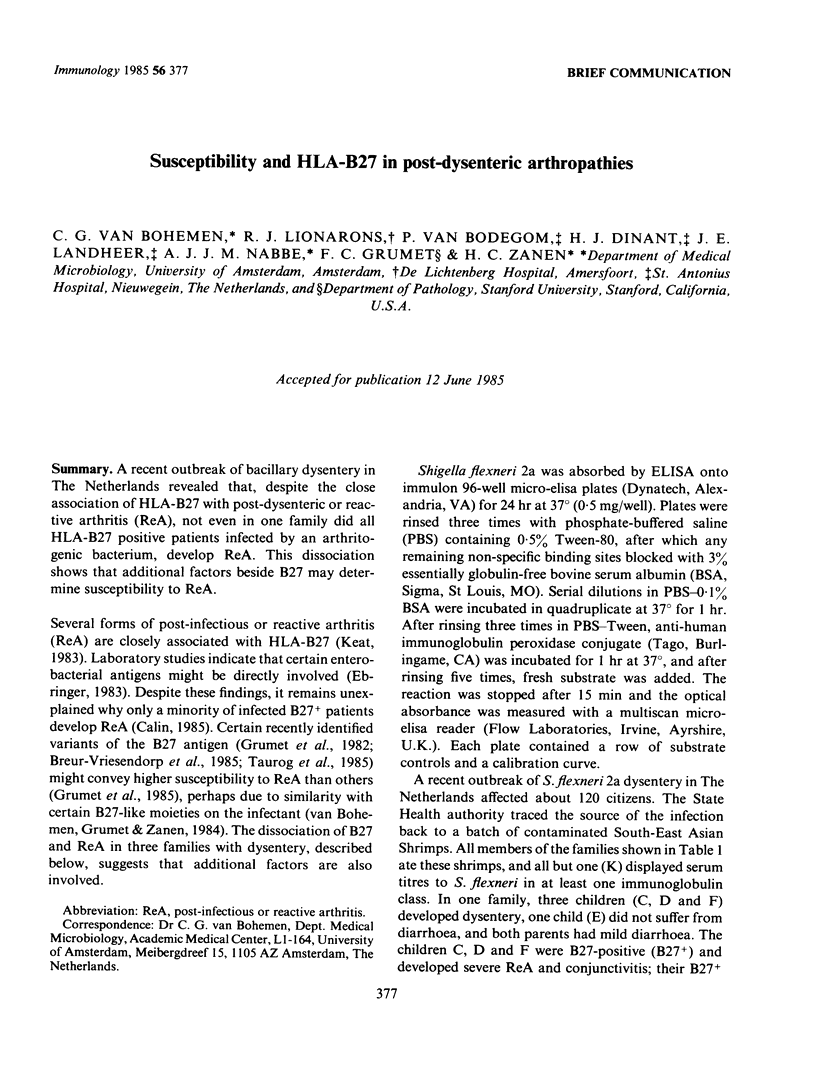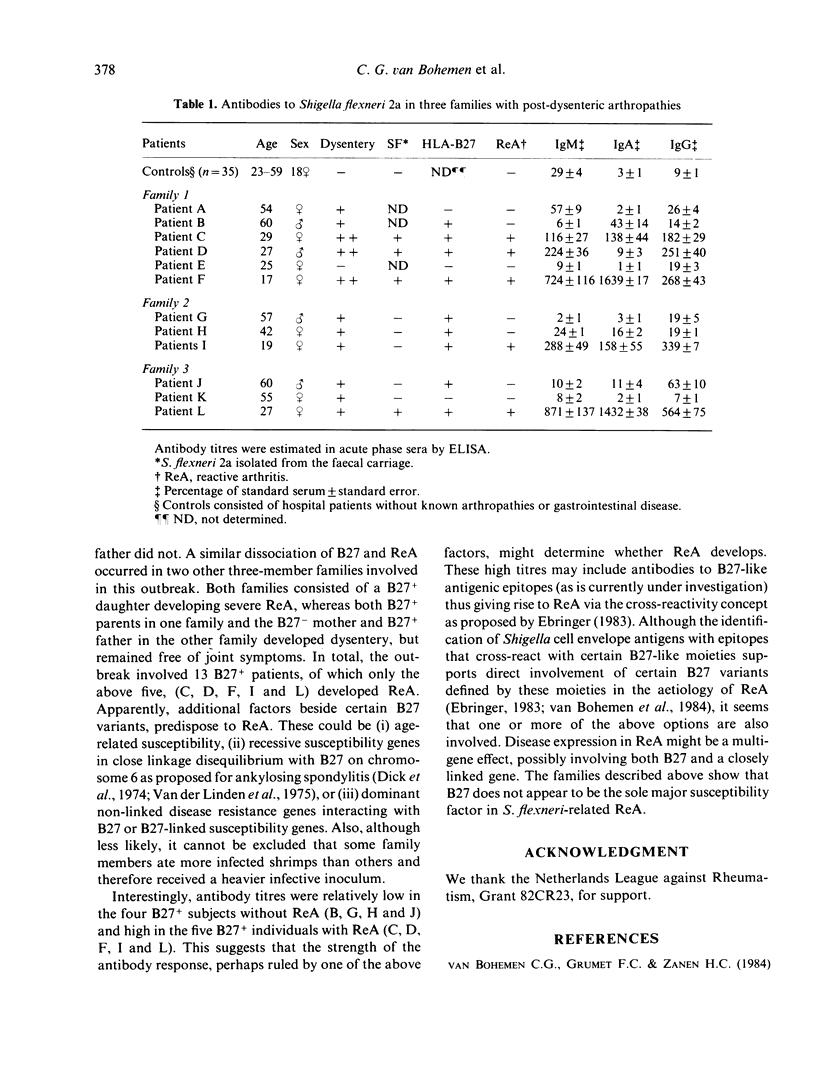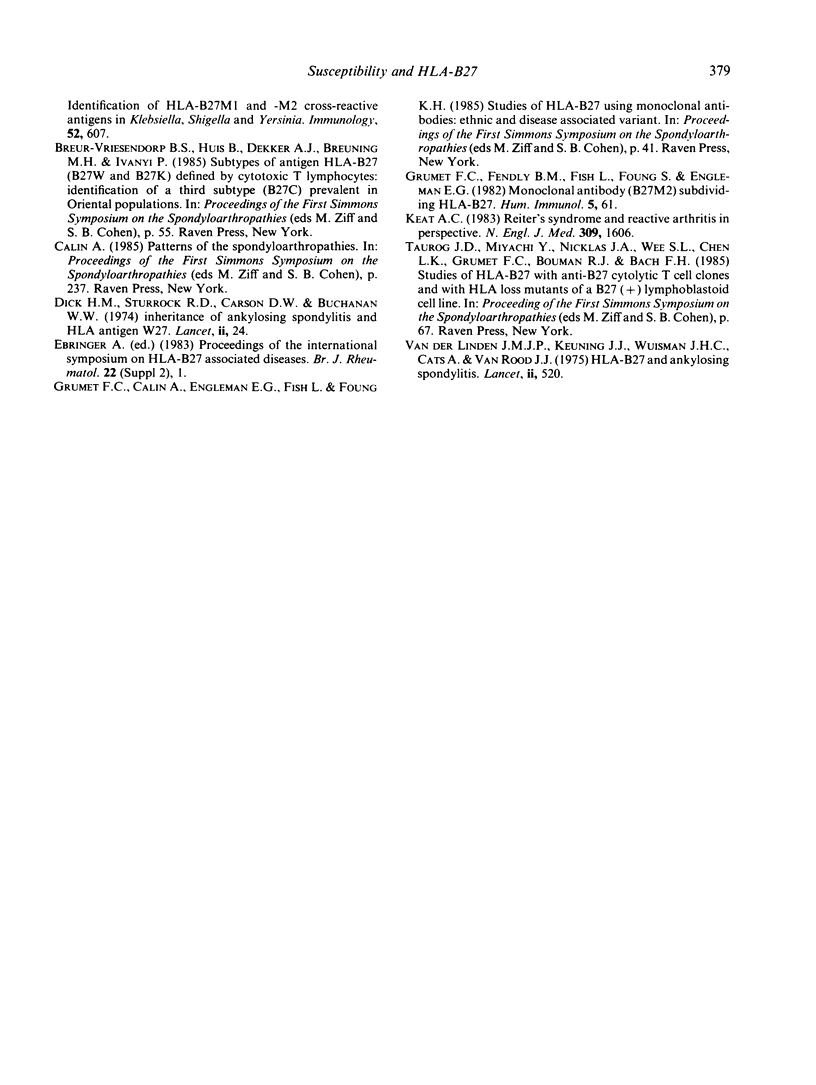Abstract
A recent outbreak of bacillary dysentery in The Netherlands revealed that, despite the close association of HLA-B27 with post-dysenteric or reactive arthritis (ReA), not even in one family did all HLA-B27 positive patients infected by an arthritogenic bacterium, develop ReA. This dissociation shows that additional factors beside B27 may determine susceptibility to ReA.
Full text
PDF


Selected References
These references are in PubMed. This may not be the complete list of references from this article.
- Grumet F. C., Fendly B. M., Fish L., Foung S., Engleman E. G. Monoclonal antibody (B27M2) subdividing HLA-B27. Hum Immunol. 1982 Aug;5(1):61–72. doi: 10.1016/0198-8859(82)90031-3. [DOI] [PubMed] [Google Scholar]
- Keat A. Reiter's syndrome and reactive arthritis in perspective. N Engl J Med. 1983 Dec 29;309(26):1606–1615. doi: 10.1056/NEJM198312293092604. [DOI] [PubMed] [Google Scholar]
- van der Linden J. M., Keuning J. J., Wuisman J. H., Cats A., van Rood J. J. Letter: HL-A 27 and ankylosing spondylitis. Lancet. 1975 Mar 1;1(7905):520–520. doi: 10.1016/s0140-6736(75)92861-5. [DOI] [PubMed] [Google Scholar]


